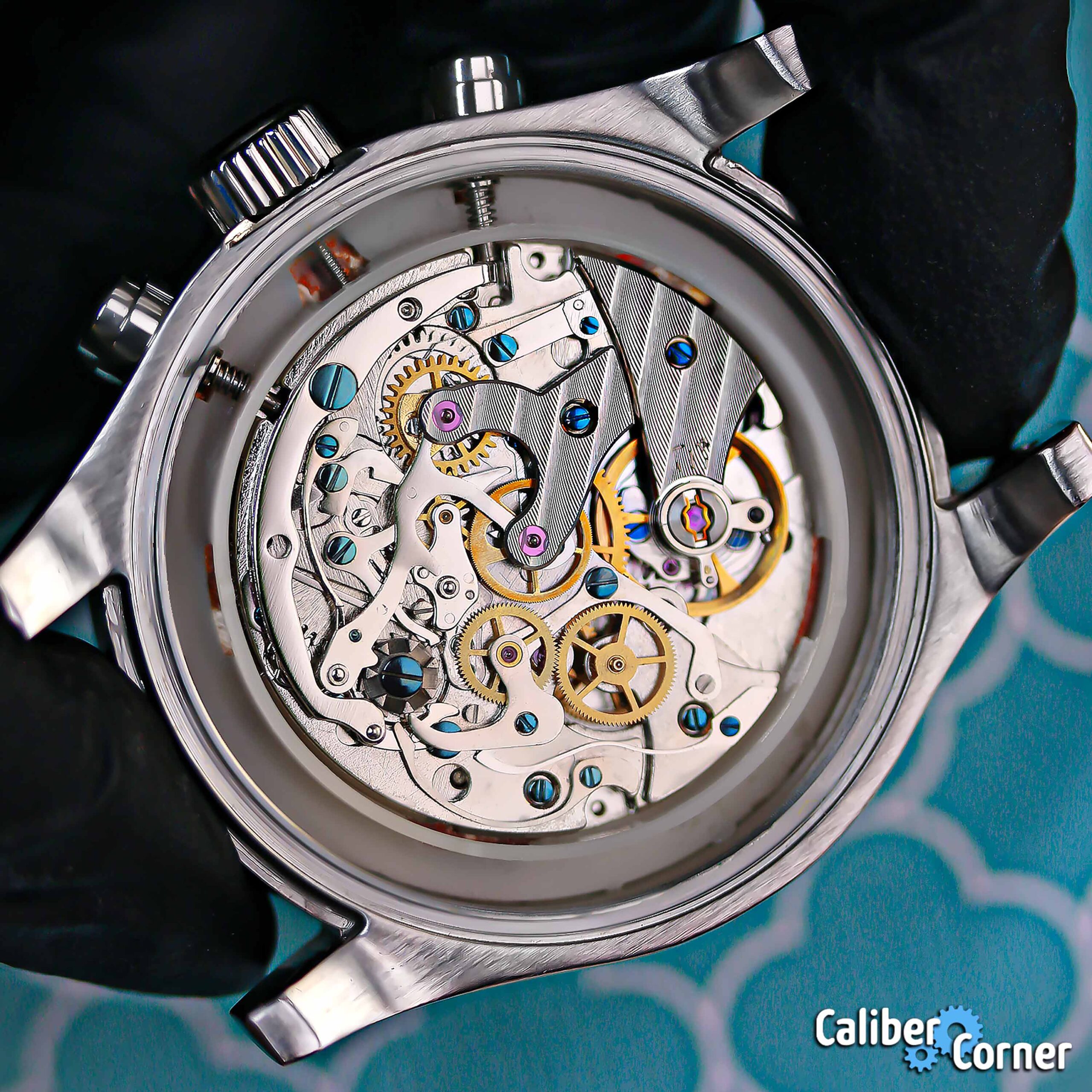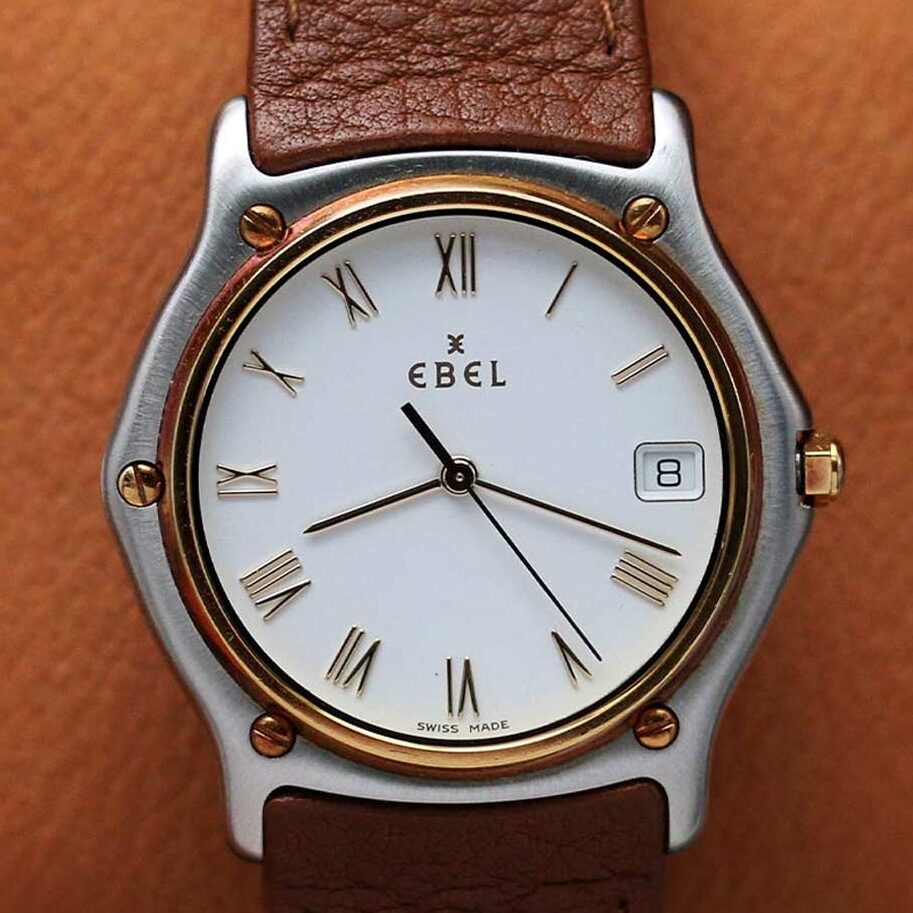Some of the topics covered in this caliber listing:
What are the main types of GMT watches?
GMT watches can be quartz or mechanical in nature, but regardless of the type of movement it is, when it comes to displaying a second time zone via a GMT hand, there are are two main ways to achieve the mechanics side of things:
An independently set GMT hand (different time zone) or an independently set main hour hand (local time).
This is where the trendy terms for describing GMT watches come in.
- Office GMT (aka Caller GMT)
- Traveler GMT (aka True GMT)
How to tell the difference?
Looking at the dials of office and traveler GMT watches side-by-side, you won’t be able to tell the difference. For that, an understanding of the differences in functionality between the two is necessary…
What is an office GMT?
An office GMT, sometimes referred to as a caller GMT, is when the GMT hand can be adjusted independently, while the main central hands displaying the local time stay the same.
On this kind of watch, you pull the crown out one click and rotate it to move the GMT hand to the hour you want it pointing to. However, when you pull the crown out two clicks to time-setting mode, the GMT hand will move in a speed equal to the main hour hand.
For example, on the Seiko caliber NH34A, when setting the main time (crown pulled out two clicks to time-setting mode), the GMT hand goes along for the ride; but you can also set the GMT hand on its own while the main time stays in place (crown pulled out one click to GMT/date setting mode).
Why is it called an office or caller GMT?
Picture a salesperson making calls to customers on the other side of the world, or some “built in USA” watch brands calling watch factories in China. Now, we know they can simply Google the time in another country before calling, but use your imagination for the sake of this lesson. The main time on the salesperson’s watch would be set to local time (say 8:20PM), with the GMT hand set to the time zone of their customer or factory (say 10:20AM). This allows them to know what time it is in both places at a glance. Or, as every blog that has ever written about the subject puts it: so that you don’t wake the other person up by calling at the wrong time. Hence, the name office GMT or “caller” GMT.
Popular examples of office GMT watch movements:
What is a traveller’s GMT?
On a traveler GMT (aka flyer GMT) or so-called “true” GMT watch, the local hour hand can be set independently, while the local minutes, GMT and seconds hands remain the same.
With this style of watch, instead of setting the GMT hand by itself, the wearer can pull the crown out one click to adjust the local hours (main/central hours hand) forwards and backwards (an operation that is also used to set the date if the watch has one). Similar to the office GMT above, traveler GMT watches also allow for the GMT hand to be set with the main time when the crown pulled out two clicks in time-setting mode.
Why is it called a traveler’s GMT?
It is called a traveler’s GMT because of the way the “jumping hours” is used to adjust the time when “jumping” across time zones. This style of GMT movement makes it easy to change the hours without messing up the main time on the dial. You use the GMT hand for your home time zone – in other words, your home time becomes your Greenwich Mean Time, and your travel-to time zone is represented by the jumping hours.
Picture a digital nomad making regular visa runs or a billionaire flying around on a private jet. With a traveler GMT, they can keep track of different time zones by pulling the crown out one click and simply rotating the crown clockwise or counterclockwise to jump the main hour hand forwards or backwards to the current local time. While this adjustment is being made, the minutes stay in place and the seconds continue to move. The watch is not hacked for this setting, so timekeeping is not affected. The GMT hand still points to the home time zone.
Also interesting to note: when the crown on a traveler GMT is pulled out one click to adjust the local hour hand, the seconds hand does not hack, even on a hackable watch. When the crown is pulled out two clicks to full time-setting mode, the seconds will hack (aka stop). This is so that the precise minutes and seconds are not changed when traveling across time zones, which typically happens in hour increments (except for a few locations in the world with 30 and 45 minute time zones – here is a list of those locations). This subtle feature also makes it convenient for precision-obsessed watch enthusiasts to adjust their watch for daylight savings time without stopping the movement.
Popular examples of traveler GMT watch movements:
Which type of GMT watch is better?
For most people (aka the work-from-home folks), the office or caller GMT is ideal. Especially if you do not have any reason to track a second time zone, you can use the GMT hand to display military time (24 hour time).
For jet-setters (like digital nomads or billionaire travelers who pay $15,000 USD just to land their private jet), the traveler GMT would be more useful.
But, hey, there’s no harm in having at least one of each in your collection!
If a traveller’s GMT is a “true” GMT does that mean an office GMT is a fake GMT?
Being in the watch industry long enough you start to observe how the direction of trends flows with what new watches are being released and actively marketed on blogs, YouTube channels and social media ads.
These trends are often fueled by buzzwords and become key content drivers in articles and videos by the creator and influencer class – creating a snowball effect in the enthusiast community, until it eventually melts and another snowball (trend or buzzword) is rolled down the hill of consumer attention spans.
Not long ago it was “true” GMTs taking the watch community by storm. Today it is “geezer watches” getting all the attention. In the case of the later, it’s always interesting to see watches that dealers couldn’t give away 10 years ago, being peddled to the green and unbeknownst-to-them crowd.
Buzzwords and trends are crucial for clicks and views in an otherwise unchanged, centuries-old industry.
The truth is, there is only so much that can be said about watches, so when there is something new to talk about, it gains traction and propels trends forward until it runs out of steam. Unfortunately, the constant barrage of on-trend releases and writings also takes form as mislead sentiment amongst the community.
When a buzzword takes off, it makes influencers sound smarter, leading to more authority on the subject. The more authority on a subject, the more followers you get, the more clicks you get, the more ad revenue you get. The word “TRUE” in all caps really helps with this, just check the GMT-related thumbnails on YouTube.
These trends also lead to product development decisions from watch brands. Trends like this turn buyers and sellers into marketing zombies. The brands end up making watches without thought and consumers buy them without thought. You already have 5 GMT watches in your collection, do you really need another one just because it’s a so-called “true” GMT that all the side-hustle YouTubers are talking about for an extra spike in ad revenue from a free watch they were gifted from a brand that didn’t innovate but were merely given a heads up from their wholesale movement rep letting them know that 6 months from now a new GMT caliber will be added to the lineup and they can get first dibs if they order 300 now and all they have to do is add an extra hand and change the bezel markers on an already existing model? How much traveling do you do? When you finally take that vacation you deserve, are you going to take the true GMT you purchased?
The GMT complication is a good example of that. Today, because movement makers like Miyota have released a GMT movement for under $100, giving microbrand watches the ability to set the time like you would on a Rolex GMT-Master II, suddenly all other GMTs are imposters (not “true” GMTs), making them second-rate quality in the eyes of collectors and trend-seekers.
Calling it a “true” GMT doesn’t help matters. Yet, as watch brands, blogs, and magazines tout the trueness of the jumping hour hand in relation to dual-time watches, are they forgetting the decades of untrue GMTs they praised for years?
That’s the problem with trends in this hobby of ours. They sometimes misinform and distract us, subjecting the community to a collective shiny object syndrome.
One thing being different doesn’t make another thing null and void. A GMT is a GMT, yet the word “true” being thrown around could influence a watch noob to make a buying decision (and pay more) for a watch that is actually less useful for them. Take the non-traveling, cold-calling salesperson example above: so excited to acquire their first GMT watch, and after saving up for months, they are definitely going for what their favorite YouTuber called a “true” GMT – only to find that the functionality doesn’t quite work as well for sitting at a desk making phone calls across the world.
When Seiko released the affordable caliber NH34A, I mentioned in the caliber listing that it was surprising how little attention it got from the community. Finally, a movement that would allow for microbrand to release an automatic GMT – a configuration that only a couple of years ago was hard to find and usually came in the form of a quartz Ronda 515.24.
The NH34A was quickly overshadowed by the Miyota 9075 release. It was as if Seiko made a good move on the chess board, but it was the one move Miyota was waiting for. By the next turn, Miyota’s knight was sweeping across the board to topple Seiko’s queen. As cool as it is to have a second time zone on the NH framework, the 9075 took the spotlight and brands and blogs have been running with it full-throttle ever since.
It must have been a real face palm situation for the folks at Seiko Instruments Inc., but you can’t really blame them. It’s not so much about reading into what the community wants, it’s more about not knowing the impact of a buzzword or trend ahead of time. Did Swatch know the MoonSwatch launch was going to be as crazy as it was? Did they know the Moonshine Gold version was going to be a bust? Much of this game is what I call SMH – Strategically Manufactured Hype (yes, it is also a pun for SMH, the 3-letter emotion I express when seeing it play out IRL). But, even then, it also comes down to good timing.
So the answer to the question is:
An office or caller GMT is just as real and true of a GMT as a traveler GMT, just different.
By the way…
Perhaps you will find it ironic, given all that you just read, that the original Rolex GMT-Master mentioned here was not a true GMT in today’s terms. The 24 hour GMT hand followed the main hour hand and the second time zone was indicated via the bi-directional 24 hour GMT bezel. The GMT-Master II, on the other hand, is a traveler style GMT.
TL;DR:
Office/Caller GMT = GMT hand can be adjusted independently (24 hour hand jumps)
Traveller/True GMT = main hour hand can be adjusted independently (local hour hand jumps)
Additional Resources:


 network of watch sites
network of watch sites













Recent Comments
The Baltany S4090 Pie-Pan Dial uses this movement. Well-made homage of the vintage Omega that…
I buy a lot of this movement from... China... And no they are not fake…
I browsed TOMAZ's official website but couldn't find it。Only sale offline?
Mido All Dial
My wife's 2024 Tudor m35800-0010 Clair de Rose is fast by about 8 minutes per…
Van der Gang (20053) uses a Soprod M100
Hello, Have you got any informations about date changing? I mean is it linked to…